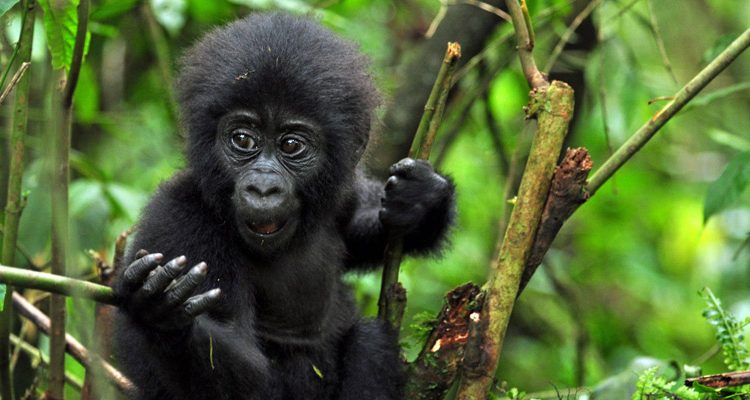
Choosing the Best Time for Gorilla Trekking
Choosing the Best Time for Gorilla Trekking: A Seasonal Guide to Encounter the Gentle Giants. Gorilla trekking stands as a pinnacle of wildlife experiences, offering a rare and intimate encounter with Earth’s gentle giants. When planning this extraordinary journey, one crucial consideration is the timing of your visit. The best time to embark on a gorilla trek can significantly impact your experience, from weather conditions to gorilla behavior and overall comfort. In this comprehensive guide, we will delve into the different seasons and their effects on gorilla trekking, helping you make an informed decision and ensuring that your rendezvous with these majestic creatures is nothing short of magical.

Understanding the Seasons: A Brief Overview
The climate and weather conditions in the regions where gorilla trekking takes place play a pivotal role in determining the best time for this endeavor. Uganda’s Bwindi Impenetrable Forest and Mgahinga Gorilla National Park, as well as Rwanda’s Volcanoes National Park, are the primary destinations for gorilla encounters. Let’s explore the four distinct seasons that characterize these regions and their impact on your gorilla trekking experience.
1. Dry Season: June to August and December to February
Overview
The dry season is often considered the prime time for gorilla trekking due to the favorable weather conditions and ease of trekking through the rainforests. This season is divided into two periods: June to August and December to February.
Weather
During these months, the weather is relatively dry, with lower chances of rainfall. Clear skies and pleasant temperatures create a comfortable environment for both trekking and wildlife observation.
Gorilla Behavior
Gorillas are generally more active during the dry season, as they move in search of food and water. This increased activity enhances the chances of observing various behaviors, from playfulness to interactions within gorilla families.
Trekking Conditions
Trekking during the dry season is less challenging due to the absence of heavy rains. Paths are drier, and the trails are less slippery, making the overall trekking experience more comfortable.
2. Wet Season: March to May and September to November
Overview
The wet season comprises the months of March to May and September to November. While it’s considered the low season for gorilla trekking, there are unique aspects that make it an attractive option for some travelers.
Weather
The wet season brings intermittent rainfall, often in the form of short, heavy showers. The landscapes come alive with vibrant greens, and the air is infused with the earthy aroma of the rain-soaked forest.
Gorilla Behavior
During the wet season, gorillas tend to remain closer to lower elevations, where food is abundant. While gorilla sightings are still possible, the gorillas’ movements might be influenced by the availability of food sources.
Trekking Conditions
Trekking during the wet season can be more challenging due to muddy and slippery trails. However, for those seeking a more adventurous experience and unique photographic opportunities, this season can offer a different perspective of the rainforest.
![]()
Considering Key Factors: When to Plan Your Gorilla Trek
1. Weather and Comfort
For travelers who prioritize comfortable trekking conditions and pleasant weather, the dry seasons (June to August and December to February) are ideal. These months offer clear skies, less rain, and more comfortable temperatures, ensuring an enjoyable gorilla trekking experience.
2. Gorilla Behavior and Wildlife Observation
If your goal is to witness a range of gorilla behaviors and interactions, the dry seasons are generally recommended. During these periods, gorillas are more active and move around in search of food, increasing the chances of captivating observations.
3. Budget Considerations
The wet seasons (March to May and September to November) often coincide with lower tourist traffic and, in some cases, reduced prices for accommodations and permits. If you’re looking to experience gorilla trekking with a potential budget advantage, the wet seasons might be worth considering.
4. Unique Photography Opportunities
For photography enthusiasts seeking to capture the lush and vibrant landscapes of the rainforest, the wet seasons provide a canvas of vivid greens and atmospheric conditions that can add a unique dimension to your photographs.
In Conclusion: The Perfect Time for Your Gorilla Trekking Adventure
The best time for gorilla trekking ultimately depends on your preferences, priorities, and willingness to embrace different weather conditions and challenges. The dry seasons offer comfortable trekking conditions, higher gorilla activity, and clearer skies, making them the popular choice for many travelers. On the other hand, the wet seasons present unique opportunities for those seeking adventure, lower tourist numbers, and a different perspective of the rainforest.
Whether you choose to venture into the rainforests during the dry or wet seasons, your encounter with the gentle giants is sure to leave an indelible mark on your heart. Regardless of the time of year, the experience of observing mountain gorillas in their natural habitat is a privilege that transcends seasons and weather. As you embark on this journey, remember that each season has its own allure, and the bond you forge with these remarkable creatures remains constant, a testament to the extraordinary connection between humans and nature.
